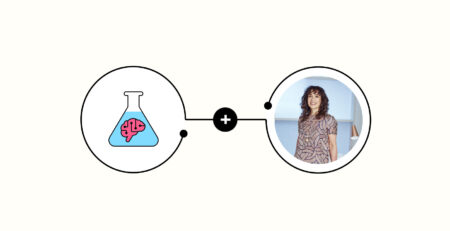Making Gen Z listen: how to tailor your advertising to specific age groups
The focus on online continues to grow. With parts of the world dipping in and out of lockdown and Christmas fast approaching, online shopping is a constant which users can rely on. In fact, U.S. holiday e-commerce sales are expected to increase 33% year-over-year to $200 million this year. Having a solid advertising strategy in place will help you make the most of this boom and ensure your business weathers this storm and any others on the horizon.
A key piece often missing from advertising strategies is correct audience targeting. Even if your product or service appeals to every demographic, what attracts older consumers may put younger ones off completely. By dividing your ad strategy into specific age groups, you can ensure that you’re really getting people to listen to what you have to say.
Millennials
Millennials are defined as born between 1981–2000. They’re no longer the ‘younger generation’ but one who has moved on to the next stages of their lives: buying houses, climbing the career ladder, having children. Millennials’ priorities have changed, but they’re still the switched-on demographic they were as teenagers.
Sustainability has always been a passion for this demographic. As revolutionaries leading the way, they’ve empowered the younger generations to place a currency on how sustainable a brand is. Talking of peers, millennials place a lot of value in the opinions of others with 93% reading reviews before making a purchase.
Millennials make up a unique generation – they’re the last group who grew up without a smartphone in their hand and remember what dial-up internet was. They’re highly tech-savvy and are often the go-to person in the family when something new needs setting up or Grandma’s phone is on the blink, and don’t take technology for granted.
Online shopping was a new, exciting convenience to this generation. After being dragged around physical stores as kids, they could now get something delivered to their door in no time at all. Comparatively, newer generations don’t have this foggy memory of how annoying having to shop in-person could be. This makes their shopping habits an even split: just over half of their purchases are made online. Of these, 63% are completed on a smartphone.
They’re also very loyal shoppers – once they find a brand they like, 60% are likely to stick with them. But, they’re well aware of being ‘sold to’ with 63% using ad blockers online.
Engaging with this demographic is all about creating valuable online content. They prefer to be entertained online rather than watching tv, so it’s easier and cheaper for you to get your brand in front of them. But, because they won’t easily trust you, you have to provide value to get them on your side. A strong content marketing strategy and proving yourself to be an industry leader is where your focus should lie.
80% of millennials find in-feed, non-intrusive ads a good user experience; getting them to pay attention is all about subtlety.
Advertising to millennials:
- Make the most of native advertising for an unobtrusive approach
- Use sponsored content opportunities to offer value and position yourself as an industry leader
- Highlight positive reviews across your site and marketing materials
- Ensure your buyer’s journey is optimized for mobile and accounts for in-store to online switches
Generation Z
Generation Z encompasses those born between 1996 – 2010. They’re incredibly switched on, spend a lot of their time online and have an innate understanding of how technology works. This is an audience which many struggle to market to successfully. It’s easy for advertisers to take a blanket approach to the young – to assume that they’re all obsessed with Snapchat and ‘trendy’ brands. This isn’t the case, and understanding what is important to the youth of today will put your brand ahead of the rest.
Firstly, let’s take a look at Gen Z’s shopping habits. They have the most holistic approach to buying products; they don’t see as much of a divide between online and offline. Their user journey transcends platforms: their phones aren’t tools for online shopping, but rather an extension of the world around them. So, whilst they might purchase something through Instagram, they’re also visiting physical stores and heading to independent boutiques.
Over half of Gen Z shoppers say they enjoy shopping in physical stores because it helps them switch off from social media. Whilst this is a tech-savvy generation, they’ve created a new type of retail therapy in order to better their mental health. Because of this, Gen Z experience brands in different ways at different touch-points, so your advertising and tracking need to account for their integrated approach. If a user buys something online, but their brand experience began in-store, make sure you’re aware of this.
Trust is a big factor for this generation. With a lot of fake news circulating, they’re skeptics who can’t easily be fooled. They also place a lot of emphasis on brand values and whether they stick to their word; Gen Z looks beyond the veil to see what morals a company has and whether they’re trying to better the world. This particularly applies to sustainability, as they’re facing a climate crisis that will affect them more than anyone else.
Moreover, Gen Z isn’t looking for trendy brands: they want something that contributes to the sense of individuality which they are trying to craft for themselves. Price and convenience fall somewhat to the wayside – if a brand’s voice aligns with their own, they’ll happily pay for it.
Advertising to Gen Z:
- Decide what your brand stands for and tell your audience through everything you do
- Tailor for individuals with personalized marketing and unique products
- Run PPC ads across different ad platforms and build a strong remarketing strategy
- Ensure your in-person to online customer journey is seamless
Over 65s
More than half of people aged 65 and over now shop online. Once considered to be technologically illiterate, the older generation have proved to be fast learners. Surrounded by tech-savvy children and grandchildren, they now frequently make use of laptops and tablets to take their interests online.
That’s not to say that over 65s don’t enjoy physical stores more: shops have always found themselves at the heart of communities, and so local high streets mean an opportunity for socialization and friendship to many who live alone. But, with COVID-19 forcing the vulnerable to isolate, there’s a huge opportunity to market to this demographic online.
Advertising on the right platforms is key to reaching this target audience. Since the Coronavirus hit, there has been a 73% increase in over 65s using search; their search engine of choice appears to be Microsoft Bing, so getting set up on Microsoft Ads can help you better target your ideal audience. It’s important to diversify your online advertising from just Google; whilst they are the biggest search engine, that’s not to say that’s where your biggest audience is. With 54% of Bing users being over 45, Microsoft Ads has so much potential for this demographic.
Moreover, over 65s may not pick up on the difference between paid and organic results – they’ll be swayed by ad copy alone. So, it’s important your ads are full of benefits and tell them exactly what they’re getting.
Looking at the data, 92% of over 65s use a mobile phone but just 34% have a social media profile. This isn’t surprising, but highlights potentially under-utilized digital advertising methods. 98% of all SMS messages are read, for example, so SMS marketing may prove a gold-mine for this demographic as a phone is something they use on a daily basis. We’re not talking spammy texts, but helpful, informative messaging that spreads the word about what you offer.
Furthermore, seniors are also less likely to explore new options, so winning their loyalty is a great long-term strategy. Their knowledge may be lacking in some areas, but being that brand that takes the time to educate and inform them will really pay off in the long run.
Advertising to over 65s:
- Simplify digital journeys and add clear CTAs for them to take action
- Use offline media to drive their focus online
- Consider running ads on Microsoft Bing
- Create how-to guides and tutorials to help fill gaps in their knowledge
Baby Boomers
This age group surrounds the years 1946 – 1964 and is so named because it highlights the dramatic increase in births that were seen after the wartime. For the purpose of this article, these audience targeting ideas will bookend millennials and over 65s.
This demographic is the most affluent and has the biggest disposable income. As many have grown children, established careers, and solid investments, boomers have a reported $2.6 trillion in buying power. In fact, boomers wealth is 12x greater than millennials’.
With a lot of money to spend, this generation can afford to pride convenience above all else. Keep this in mind when building your ad campaigns: make delivery times prominent, payment methods seamless and your user journey as few clicks as possible.
Baby boomers are happy to browse online, however, browsing in-store holds less appeal; to them, shopping isn’t relaxing, but rather stressful, so anything your brand can do to make things seem easy will be a win in their eyes.
This doesn’t mean boomers have an aversion to shopping in physical stores, but rather the opposite. 67% would rather pick something up from a nearby retailer if available than order online – they just want it to be easy. For this demographic, harmonious online and in-store strategies will make their preference for services such as click-and-collect a no-brainer.
Furthermore, popularity holds a lot of sway for this age group. If a product is seen to be a fan-favorite, then their interest is sparked – something which doesn’t bother millennials and Gen Z. Social proof is an old psychological method which relies on users following the herd: this is a generation who care about what others think, but less so in the traditional sense of reviews.
Lastly, 82% of boomers have at least one social media account. Their favorite platform is Facebook, so it’s worth looking at your audience data for this site in particular. Their favorite search engine is Microsoft Bing – 20% of Microsoft’s user base is made up of 45-54-year-olds. Boomers spend a lot of time researching their big purchases, so making sure your PPC strategy is tight and targeting the right keywords is crucial.
Advertising to boomers:
- Create high-value customer lookalike audiences on Facebook
- Take an omni-channel approach to social media
- Consider investing more as this demographic likely to spend more bringing a higher ROI
Targeting your ideal type of customer
If you want to tailor your advertising to specific age groups, you need to understand how each of them shop. Look into their buying habits, see how they react to different channels and make sure you’re covering all your bases.
These advertising tips will make that easy – and will help you create a strategy that boosts your ROI.
About the author
Amber Dawson, Creative Content Strategist at Adzooma
“I’m the Creative Content Strategist at Adzooma and spend my time coming up with ideas and writing about Digital Marketing. My work features on the likes of Marketing Donut and Marketing Profs. I studied English at Exeter University and have a Creative Advertising Masters from Falmouth. In my spare time, I like to read, draw, and get taken for walks by my German Shepherd.”




